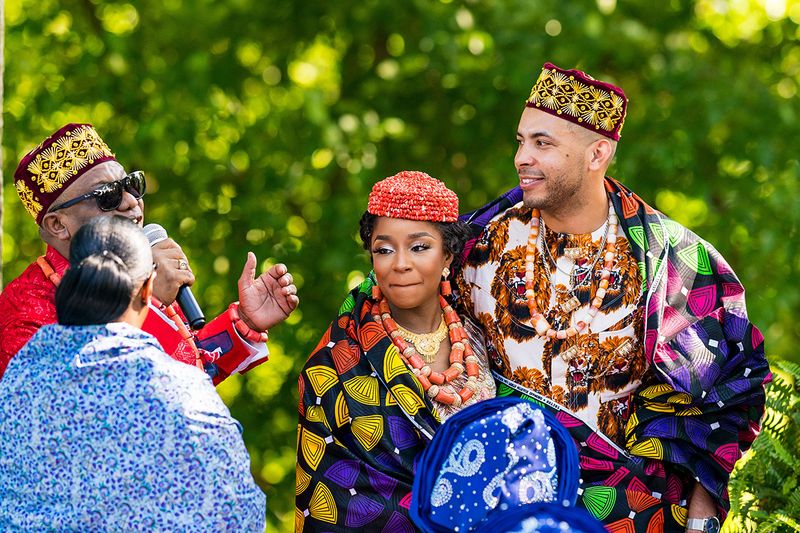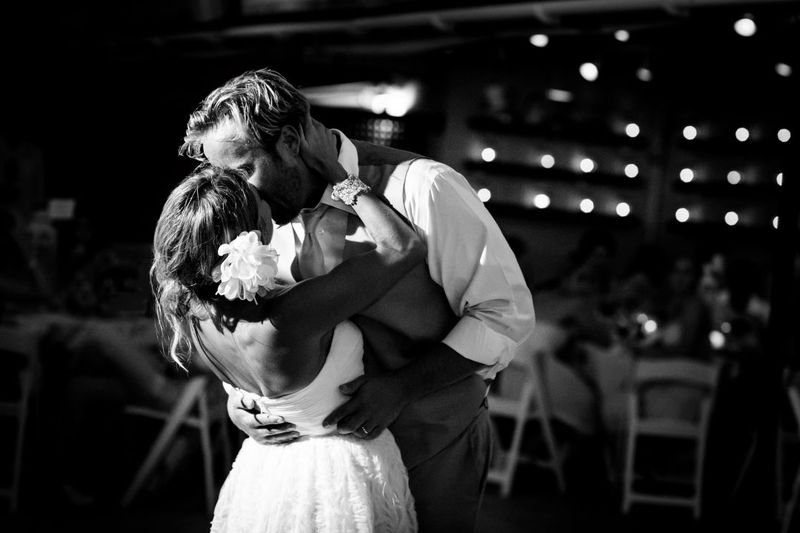18 Ways We Date And Marry That Are Changing
The landscape of relationships is evolving rapidly, influenced by cultural shifts, technological advancements, and a deeper understanding of emotional well-being.
Here are 18 ways dating and marriage are changing, reflecting the diverse approaches people now take in finding and maintaining love.
1. More Couples Living Together Before Marriage

Living together before marriage was once considered taboo, but it has become a common step for many couples.
Cohabitation helps couples understand each other’s habits and lifestyle choices. Whether it’s deciding on decor or sharing chores, living together can solidify a partnership. Some studies even suggest that couples who live together first are better prepared for marriage.
Yet, this arrangement isn’t without challenges. Some worry about losing the excitement of a fresh start post-wedding, but for many, the benefits outweigh potential drawbacks.
2. Delaying Marriage Until Later in Life

Marriage at a young age is no longer a given. Increasingly, individuals are choosing to wed later, valuing personal growth and career before settling down.
This trend allows for greater emotional maturity and financial stability, which can lead to stronger, more resilient marriages. Prioritizing self-discovery and independence, many find themselves better partners.
Despite societal pressures, delaying marriage until later in life often results in more intentional unions. The choice reflects a shift toward marrying for the right reasons, rather than conforming to traditional timelines.
3. Long-Distance Relationships Thriving Online

Thanks to technology, long-distance relationships are not only surviving but thriving. Technology bridges the gap, making distance less daunting.
Virtual dates and digital communication allow couples to share experiences and maintain closeness, regardless of physical separation. This way, partners can support each other in real-time, sharing both mundane and significant moments.
While challenging, these relationships often build strong communication skills and trust. Couples find creative ways to connect, viewing distance as a temporary hurdle rather than a barrier.
4. Open Conversations About Mental Health Early On

Discussing mental health is no longer postponed until crises arise. Acknowledging each other’s emotional needs builds a stronger foundation.
Open conversations about mental health lead to more understanding and supportive relationships. Couples who share their struggles, triumphs, and coping strategies grow closer, fostering empathy and resilience.
In this era, mental health awareness is crucial. Early dialogues prevent misunderstandings and promote well-being, setting the tone for a relationship grounded in honesty and compassion.
5. Prenuptial Agreements Becoming Common

Once seen as unromantic, prenuptial agreements are now standard for many couples. Transparency about finances creates trust.
Prenups offer peace of mind, allowing couples to focus on their relationship without financial anxieties looming. With assets and debts clearly defined, they ensure future financial security.
Though not the most romantic conversation, discussing a prenuptial agreement can strengthen communication about money matters.
6. Dating Apps as the New Matchmakers

With a swipe, love is just a click away. Dating apps have revolutionized matchmaking, offering more options than ever.
These platforms provide access to potential partners worldwide, broadening dating pools and allowing people to connect over shared interests and values. It’s a far cry from traditional matchmaking.
Despite the digital nature, dating apps encourage genuine connections. Users report finding partners who align better with their lifestyle and aspirations, making the dating journey more exciting and personalized.
7. Growing Acceptance of Child-Free Marriages

Choosing not to have children is becoming more mainstream. This choice reflects changing perceptions of family.
Child-free marriages allow couples to pursue different life goals, from advancing careers to exploring the world. It fosters a partnership based on mutual interests and shared adventures.
This lifestyle choice highlights a shift from traditional expectations, embracing individual fulfillment. For many, it’s about prioritizing personal happiness and freedom, creating a new narrative around marriage.
8. Marrying Without Big Weddings

Big weddings are no longer the norm. It’s a growing trend among couples seeking meaningful celebrations.
Smaller weddings allow for personal touches, focusing on what truly matters. With fewer guests, couples can invest in experiences rather than extravagance, often finding the day more enjoyable and less stressful.
This shift reflects a desire for authenticity. By prioritizing their vision, couples create a day that truly represents their love story, without societal pressures dictating their choices.
9. More Women Proposing to Men

The tradition of men proposing is evolving. Women proposing challenge outdated norms and empower individuals to express their love in their own way. It symbolizes equality and mutual respect, reshaping traditional roles.
This trend showcases evolving views on commitment. With more women feeling confident to propose, relationships become partnerships built on shared values and mutual admiration, celebrating love without constraints.
10. Choosing Financial Stability Over Romance

Financial compatibility is taking precedence in modern relationships. Focusing on financial health ensures long-term security and reduces stress. By aligning financial goals, couples create a stable foundation, supporting each other’s ambitions and future plans.
This pragmatic approach reflects a shift toward sustainable relationships. Prioritizing financial stability doesn’t diminish love; it enhances it, allowing partners to thrive together without the strain of financial insecurity.
11. Co-Parenting Without Romantic Involvement

Co-parenting is evolving beyond romantic boundaries. This arrangement allows parents to collaborate, ensuring their child’s well-being. By prioritizing parenting over romantic ties, they maintain a healthy, functional dynamic.
Such partnerships highlight the importance of shared goals and communication. It’s about parenting with respect and cooperation, demonstrating that love for a child can transcend relationship status.
12. Embracing Cultural and Religious Differences

Cultural and religious diversity in relationships is celebrated more than ever. These relationships offer rich experiences, fostering understanding and appreciation for different backgrounds. By blending cultures, couples create unique traditions, enhancing their bond.
This acceptance reflects a global perspective on love, valuing diversity and inclusivity. Couples show that love transcends cultural and religious boundaries, enriching their lives and communities.
13. Defining Relationships Outside Traditional Labels

Traditional labels are giving way to personalized relationship definitions. This freedom allows partners to establish connections that reflect their values and needs. By moving beyond labels, they focus on building authentic, supportive relationships.
Such dynamics highlight the importance of individuality and mutual respect. It’s about creating a partnership that suits them, without the constraints of societal expectations.
14. Divorce No Longer Being Taboo

Divorce is shedding its stigma, seen as a path to new beginnings. This shift reflects changing attitudes toward ending marriages that no longer serve personal growth. Divorce is viewed as a positive step toward self-discovery and happiness.
The normalization of divorce encourages individuals to prioritize well-being over societal judgments. It’s about living authentically, with the understanding that sometimes, letting go leads to a brighter future.
15. Celebrating Second and Third Marriages

Love found later in life is cherished more than ever. Second and third marriages offer a chance to redefine relationships, carrying lessons from the past. These unions are often more intentional, focusing on compatibility and shared life goals.
This trend emphasizes the belief in love’s enduring nature, regardless of age or previous experiences. For these couples, it’s about building a future together, with a foundation of wisdom and mutual respect.
16. Men Taking on More Domestic Roles

Traditional gender roles are evolving, with more men embracing domestic responsibilities. This shift supports balanced partnerships, allowing both partners to pursue careers and personal interests. By sharing household duties, families foster teamwork and mutual respect.
Such changes challenge stereotypes, highlighting the importance of flexibility in modern families. It’s about setting an example for his children, teaching them that nurturing knows no gender boundaries.
17. Women Keeping Their Last Names

Women keeping their last names after marriage is increasingly common. This decision challenges traditional norms, symbolizing autonomy and self-expression. It’s about maintaining individuality while embracing partnership.
The trend highlights evolving views on marriage, where identity and equality are prioritized. It’s about staying true to herself, proving that love and commitment go beyond names.
18. Couples Valuing Emotional Compatibility Above All

Emotional compatibility is becoming the cornerstone of modern relationships. This focus encourages partners to communicate openly and support each other’s emotional needs. It fosters deeper connections, leading to fulfilling, long-lasting relationships.
Emotional compatibility forms a bond that transcends superficial attractions. It’s about building a partnership based on trust and emotional alignment, ensuring a harmonious journey together.







